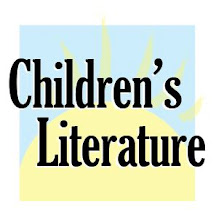Magic School Bus and the Climate Challenge
Oh, that all students could have an imaginative science teacher like Ms. Frizzle! The Friz loads her students into a magical bus-plane which takes them on a tour of the world. They see first-hand the causes and results of global warming. Student notebook pages are interspersed throughout the text to show their understanding of these concepts. Whimsical illustrations throughout the book show the elements of global warming and the students’ reaction to these events on this tour. Questions and answers in the back of the book address what children have read. The text is age appropriate and the humor combined with scientific facts make reading this book fun and informative. Young readers and their parents will learn how to make actionable changes that will make a difference in global warming. Although this is a stand-alone topic, it is part of the “Magic School Bus” series. 2010, Scholastic Press, $16.99. Ages 7 to 10. Reviewer: Annie Laura Smith (Children's Literature).
The Hive Detectives: Chronicle of a Honey Bee Catastrophe
In 2006, a commercial beekeeper lost all the bees in 400 hundred of his hives for a total of 20 million bees. To unravel the mystery, four respected scientists began an investigation to seek the cause of the bees’ disappearance. What follows for readers is the unraveling of a mystery to match any fictional whodunit. One by one, leads are followed and discarded, but despite many theories, this mystery has yet to be solved. The book also includes the work of amateur beekeeper Mary Duane and follows her to her hives to watch her care for her bees and learn the fascinating process of extracting honey from the hive, which the author calls “liquid gold.” Along the way, readers pick up information on the social structure of the hive, physical description and division of labor of its inhabitants, and the vital role of bees in the agricultural world. Faux notebook-style pages introduce each scientist as well as provide some hive and bee information. The accompany photos, in addition to being well composed, are dramatic and colorful. An extended appendix and comprehensive glossary and index round out this highly readable and worthy science book. 2010, Houghton, $18.00. Ages 10 to 14. Reviewer: Beverley Fahey (Children's Literature).
The Immortal Life of Henrietta Lacks
Science journalist Skloot makes a remarkable debut with this multilayered story about “faith, science, journalism, and grace.” It is also a tale of medical wonders and medical arrogance, racism, poverty and the bond that grows, sometimes painfully, between two very different women—Skloot and Deborah Lacks—sharing an obsession to learn about Deborah’s mother, Henrietta, and her magical, immortal cells. Henrietta Lacks was a 31-year-old black mother of five in Baltimore when she died of cervical cancer in 1951. Without her knowledge, doctors treating her at Johns Hopkins took tissue samples from her cervix for research. They spawned the first viable, indeed miraculously productive, cell line—known as HeLa. These cells have aided in medical discoveries from the polio vaccine to AIDS treatments. What Skloot so poignantly portrays is the devastating impact Henrietta’s death and the eventual importance of her cells had on her husband and children. Skloot’s portraits of Deborah, her father and brothers are so vibrant and immediate they recall Adrian Nicole LeBlanc’s Random Family. Writing in plain, clear prose, Skloot avoids melodrama and makes no judgments. Letting people and events speak for themselves, Skloot tells a rich, resonant tale of modern science, the wonders it can perform and how easily it can exploit society’s most vulnerable people. Review from Publishers Weekly http://www.publishersweekly.com/pw/reviews/single/53674-the-immortal-life-of-henrietta-lacks.html
The Book of Potentially Catastrophic Science
Connolly starts at the beginning of human experimentation in the Stone Age and discusses the great discovery of weapons. Moving forward in history, the book explores the discovery of fire, the creation of arrows, and the wheel. Spending a chapter on each momentous change for Earth, we march past many scenes in history including the discovery that the earth is not flat; the invention of gunpowder, and nuclear explosions. The breadth of this book is amazing. Through it all, Connolly maintains a casual tone of a tour guide who assumes the reader is up to the (sometimes) complex topic. The projects, which are manageable for fairly young readers, include folding a paper helicopter, boiling water in a paper cup, and creating a chain reaction using marbles or toy cars. Each chapter is made up of a description of a particularly discovery or earth-changing experiment, an explanation of the scientific principles involved, and a short project. While the projects will be fun, they will not stand on their own as science fair projects; readers would need to come up with further questions to answer in their experiments. 2010, Workman Publishing, $13.95. Ages 9 up. Reviewer: Amy S. Hansen (Children's Literature).













